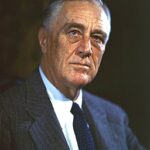The Decision
In February 1937, President Franklin D. Roosevelt unveiled his controversial Roosevelt Court-Packing Plan. The proposal would add up to six new justices to the Supreme Court. Roosevelt cited the need for judicial efficiency and modernization. ⚠️ The real motive was overcoming conservative opposition to New Deal legislation. The Supreme Court had struck down key programs like the National Industrial Recovery Act.
Constitutional Crisis Emerges
Roosevelt’s plan triggered immediate accusations of constitutional violation. Critics argued he was attempting to manipulate the judiciary for political gain. The proposal would have expanded the Court from nine to fifteen justices. 📊 Support came primarily from liberal Democrats who backed New Deal reforms. Opposition emerged from both parties and constitutional scholars nationwide.
Political Backlash Intensifies
Even Roosevelt’s Democratic allies began distancing themselves from the court-packing scheme. Senate Judiciary Committee members expressed serious reservations about the plan. The proposal faced fierce resistance in Congress despite Democratic majorities. 🔥 Public opinion polls showed declining support as the controversy intensified throughout 1937.
Impact:
Congressional Defeat
The Roosevelt Court-Packing Plan suffered crushing defeat in Congress by July 1937. Senate Democrats joined Republicans in rejecting the controversial proposal. The plan never received a floor vote in either chamber. 📉 Roosevelt’s political capital declined significantly following this legislative failure. His reputation as an unstoppable political force was permanently damaged.
Judicial Independence Preserved
The failed court-packing attempt actually strengthened judicial independence principles. Supreme Court justices demonstrated their separation from political pressure. Justice Owen Roberts began voting with liberal justices in key cases. This “switch in time that saved nine” allowed New Deal programs to proceed. 🌍 International observers praised America’s constitutional resilience during this crisis.
Long-term Constitutional Legacy
Roosevelt’s court-packing failure established important precedents about judicial branch integrity. Future presidents avoided similar attempts to manipulate Court composition for political ends. The episode reinforced checks and balances within American government structure. ⚖️ Legal scholars continue studying this crisis as a defining moment in separation of powers doctrine.
